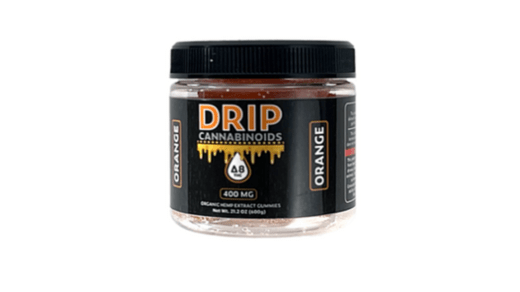
The Impact of SEO on Artisanal Product Visibility
In today’s digital world, even the most exquisite artisanal products can get lost in the vast sea of online offerings. As a passionate advocate for small businesses, I’ve seen firsthand how effective SEO can dramatically boost the visibility of these unique, handcrafted goods. It’s not just about having a beautiful product; it’s about making sure the right people find it.
SEO isn’t some mysterious art—it’s a powerful tool that can level the playing field for artisans competing against big brands. By optimizing your online presence, you can attract a dedicated audience that values quality and craftsmanship.
Just like handmade chef knives that capture the essence of traditional craftsmanship, let’s dive into how SEO can transform your artisanal business and help your products shine in the crowded marketplace.
Understanding SEO in Today’s Market
Search Engine Optimization, or SEO, refers to the practice of enhancing website elements to rank higher on search engine results pages (SERPs). It’s crucial in today’s digital market as it drives organic traffic, increasing chances of product discovery. SEO focuses on key factors like keywords, quality content, and backlinks to improve site visibility.
Keywords, specific search terms like “handcrafted jewelry” or “organic soap,” play a vital role in SEO. Integrating relevant keywords in product descriptions, blog posts, and titles helps search engines identify and rank pages appropriately. It’s about matching user search intent with the site’s content.
Content quality affects user engagement and search engine ranking. High-quality content, such as detailed product descriptions and informative blog posts, keeps visitors on the site longer. Search engines prioritize sites that offer valuable content. This makes informative, engaging content a cornerstone of effective SEO.
Backlinks, references from other reputable sites, enhance domain authority. Quality backlinks suggest that a site is trustworthy and authoritative, improving its search engine ranking. Artisans can gain backlinks by collaborating with influencers, guest blogging, or being featured in relevant industry publications.
Challenges Faced by Artisanal Products
Artisanal products often struggle with visibility due to several key challenges. Limited marketing budgets are a significant constraint, making it hard for small businesses to compete with larger brands. Without ample funds, investing in effective SEO strategies becomes a daunting task, leading to less online exposure.
Niche market limitations pose another challenge. Artisanal products usually cater to specific audiences, which narrows the potential customer base. This makes it harder to rank for broad keywords, limiting the reach of optimized content.
Establishing credibility and trust is difficult for small artisanal brands. Consumers may hesitate to purchase from lesser-known sources, impacting the overall sales. Without numerous reviews, backlinks, or social proof, it’s tough to improve domain authority.
Managing an online presence adds another layer of complexity. Artisanal businesses often lack the technological expertise required to maintain an updated and SEO-optimized website. This technical gap can result in poor site performance, slower load times, and lower search engine rankings.
Dealing with these challenges requires strategic planning and efficient resource allocation. By focusing on key SEO areas despite constraints, artisanal products can improve their online visibility and compete more effectively.
The Role of SEO in Enhancing Visibility
SEO significantly boosts visibility for artisanal products, making them more accessible to potential customers. This is particularly crucial for small businesses aiming to stand out in a competitive market.
Importance of Keywords
Keywords help search engines identify relevant content. Using precise keywords related to artisanal products ensures that these items appear in search results when potential customers search for similar products. For example, including specifics like “handmade pottery” or “custom leather goods” can attract targeted traffic.
On-Page Optimization Techniques
On-page techniques improve the effectiveness of keywords. This involves optimizing meta titles, descriptions, headers, and image alt texts. Adding high-quality content that’s useful and relevant to the target audience helps too. For instance, writing detailed product descriptions and informative blog posts can enhance on-page SEO.
Off-Page SEO Strategies
Off-page SEO involves activities outside the website to increase its authority. Building high-quality backlinks from reputable sites enhances credibility. Collaborating with influencers and engaging in social media marketing also play a vital role. For example, guest blogging on related sites and sharing artisanal success stories on social media can drive traffic to the main site.
Case Studies of Successful SEO Implementation
Examining successful SEO strategies helps artisanal businesses understand how to optimize for better visibility. Here, I’ll detail two cases demonstrating effective SEO implementations.
Case Study 1: Small Craft Beer Brewery
A small craft beer brewery leveraged SEO to increase its online presence. They started by conducting keyword research to identify terms potential customers used, like “local craft beer” and “microbrewery near me.” By integrating these keywords into their website content, meta titles, and descriptions, they improved search engine rankings significantly.
Next, they created high-quality content about brewing processes, local ingredients, and beer pairings, which attracted organic traffic. They also optimized images with alt text related to their products, ensuring faster loading times and improved user experience.
Additionally, the brewery engaged in off-page SEO by acquiring backlinks from reputable local food and beverage blogs. They participated in social media marketing, sharing stories about their brewing journey and engaging with their audience, thereby driving traffic to their site through diverse channels. As a result, their web traffic increased by 120% over six months.
Case Study 2: Handmade Jewelry Brand
A handmade jewelry brand focused on SEO to compete with larger, more established competitors. They began by identifying long-tail keywords like “handmade silver rings” and “artisan gold necklaces,” which had less competition but high customer intent. These keywords were incorporated into product descriptions, blog posts, and category pages.
On-page optimization included writing engaging meta titles and descriptions that enticed clicks and accurately represented their products. High-quality images were used, each optimized with relevant alt text, enhancing both user experience and search engine visibility.
The brand also focused on content marketing, regularly updating their blog with posts on jewelry care, fashion trends, and customer stories. This content attracted niche audiences and encouraged longer site visits. Off-page efforts included reaching out to fashion bloggers and influencers for backlink opportunities and leveraging their reviews for added credibility.
Their strategic SEO efforts resulted in a 95% increase in organic traffic, significantly boosting online sales within a year.
Tools and Resources for Artisans
Selecting the right tools and resources can transform an artisan’s visibility online. These elements help in optimizing efforts and maintaining a competitive edge.
Keyword Research Tools
Effective keyword research is key for improved search engine visibility. I often use tools such as:
- Google Keyword Planner: Provides valuable insights into keyword search volumes and trends.
- SEMrush: Offers in-depth keyword analysis and competitive research features.
- Ahrefs: Assists in identifying high-performing keywords and uncovering content gaps.
Content Optimization Tools
Creating quality content involves tools that streamline and enhance the process:
- Yoast SEO: Helps optimize WordPress sites for better search engine performance.
- Grammarly: Ensures content is grammatically correct, enhancing readability.
- Hemingway Editor: Simplifies complex sentences making content more accessible.
Analytics and Monitoring Tools
Monitoring SEO efforts reveals what works and what needs adjustment:
- Google Analytics: Tracks user behavior, showing which pages draw the most traffic.
- Google Search Console: Helps identify technical issues affecting your site’s SEO.
- Moz Pro: Offers comprehensive SEO analytics, including rank tracking and link analysis.
Social Media Management Tools
Social media presence significantly boosts visibility. I leverage these tools for better management:
- Hootsuite: Manages multiple social media accounts from one dashboard.
- Buffer: Schedules posts and analyzes social media performance.
- Sprout Social: Offers extensive reporting and engagement tools.
Backlink Building Resources
Building backlinks from reputable sites enhances domain authority and SEO:
- HARO (Help A Reporter Out): Connects artisans with journalists seeking expert sources.
- Moz Link Explorer: Identifies potential backlink opportunities and tracks existing links.
- BuzzStream: Streamlines outreach efforts to acquire high-quality backlinks.
Content Management Systems (CMS)
A robust CMS simplifies website management and content publishing:
- WordPress: Popular for its flexibility and wide range of plugins.
- Shopify: Ideal for artisans selling products online with integrated SEO features.
- Squarespace: User-friendly and offers built-in SEO tools.
These tools and resources are essential for any artisan committed to improving their online presence through effective SEO strategies.
Future Trends in SEO for Artisanal Products
SEO for artisanal products continues to evolve, with several emerging trends shaping its future. As search engines get more sophisticated, businesses must adapt their strategies to stay competitive.
Voice Search Optimization
Voice search is growing rapidly, driven by devices like Amazon Echo and Google Home. Artisanal businesses should optimize for conversational keywords and long-tail queries. Questions formatted naturally (e.g., “Where can I find handmade pottery?”) are more likely to be used in voice searches than traditional text queries.
Visual Search Advancements
Visual search is another trend gaining traction. Tools like Google Lens let users search using images rather than text. Artisanal businesses, which often have visually appealing products, should optimize their images with alt text, file names, and descriptions to increase the likelihood of appearing in visual search results.
Mobile-First Indexing
Google’s shift to mobile-first indexing requires businesses to ensure their websites are mobile-friendly. This is crucial for artisanal businesses, which often attract on-the-go customers. Using responsive design, optimizing loading speeds, and simplifying navigation can improve mobile user experience and SEO performance.
Artificial Intelligence in SEO
AI technologies like Google’s RankBrain are influencing search results. Understanding user intent and behavior becomes essential. Crafting content that directly addresses common questions and problems can improve rankings. Artisanal businesses need to use analytics to gain insights into customer needs and preferences.
Local SEO Enhancements
Local SEO is vital for artisans who operate physical stores or participate in local markets. Google My Business listings, local keywords, and customer reviews can boost local visibility. Geo-targeted content can attract nearby customers seeking unique, handcrafted items.
E-A-T (Expertise, Authoritativeness, Trustworthiness)
Google values E-A-T signals, especially for content impacting a user’s well-being. Artisanal businesses can build E-A-T by showcasing craftsmanship quality, sharing detailed product creation processes, and earning backlinks from credible sites. Demonstrating expertise and trustworthiness helps establish a strong online reputation.
Staying abreast of these trends ensures that artisanal businesses can continue to enhance their SEO efforts, making their unique products more discoverable to a broader audience. Implementing these practices is crucial for maintaining a competitive edge in an ever-evolving digital marketplace.


